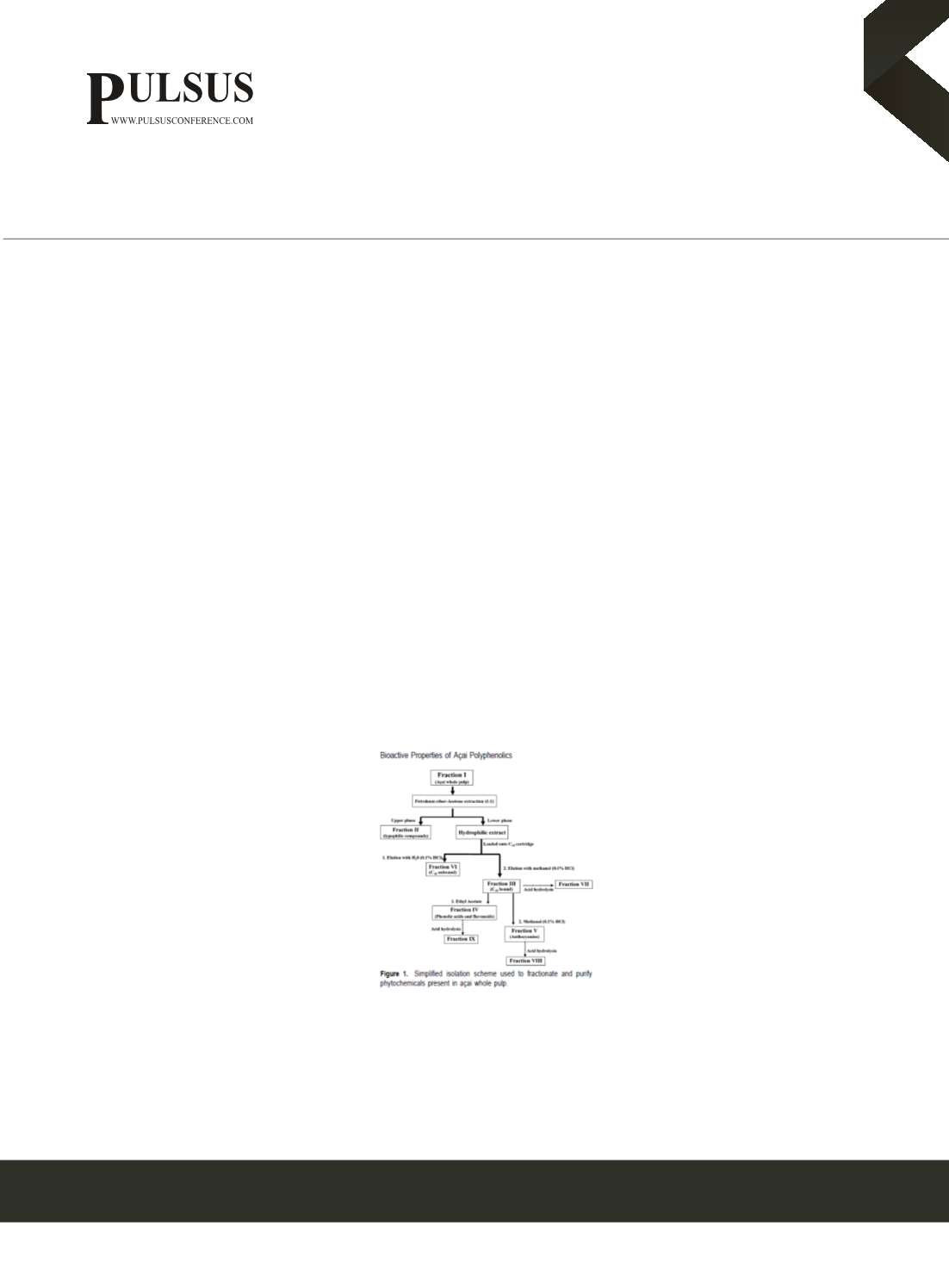

Page 25
Nutraceuticals 2019
July 15-16, 2019
Volume 2
Journal of Food and Clinical Nutrition
Advanced Nutraceuticals and Functional Foods
July 15-16, 2019 | London, UK
World Congress on
J Food Clin Nutr, Volume 2
ACAI – The Brazilian berrie and it’s molecular targets
Ney Felipe Fernandes
Nutrição Avançada, Brazil
A
çaí, a word of Tupi Guarani origin (yasa'i) meaning "weeping fruit" is the fruit of the Euterpe oleracea palm tree,
native to the Amazon rainforest, in SouthAmerica. Commercially sold acai is extracted by maceration and extraction
of its pulp containing carbohydrates, lipids (mainly oleic acid), fibers and proteins. But as in the nutritional sciences we
should not look only at the tip of the iceberg, that is, the macronutrients, we must look at what is immersed, what is more
important and what is sometimes not seen with the naked eye: its phytochemical points. When speaking of longevity, the
eyes must be focused mainly on two physiological aspects: reduction of subclinical basal inflammation and attenuation of
oxidative stress. It is probably in these two aspects (oxidative stress and inflammation) that açaí (whether consumed in
the form of fruit in natural or juice or pulp) can contribute to human health. The coloration of açaí is due to the presence
of a large number of anthocyanins. The most predominant anthocyanins in açaí are cyanidin 3-O-rutinoside and cyanidin
3-O-glycoside (C-3-O) that has correlation with improvement inflammatory indicators (TNF-alpha, NfkB) an increase in
the expression of Nrf2. Also, velutin (flavone isolated from açaí pulp) may have an anti-inflammatory role, since it was
able to modulate TNF and NfKB levels in vitro. In another study, açaí was able to modulate the activity of TLR4 receptors,
thus impacting other inflammatory markers (VCAM, ICAM, TNF-alpha, NfkB). We cannot say that we would obtain safe
and desirable results from anthocyanins by simply consuming the açaí that is marketed (and usually not its fresh fruit) Nor
can we, as we know, claim that a given functional food cures certain disease. However, it is prudent to work with the idea
of 'chronic, regular ingestion' to promote longevity.
Biography
Nutritionist, master’s in molecular biology (Universidade Federal do Paraná), Specialist in Exercise Physiology (Universidade Veiga de
Almeida- Rio de Janeiro), Nutrição Avançada Owner, Author of the book "Sports Nutrition - Myths and Truths".
neyfelipef@hotmail.com















